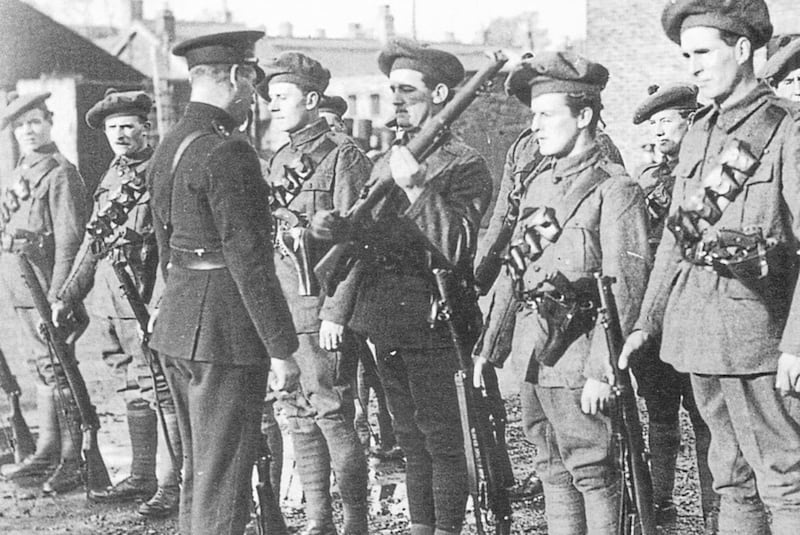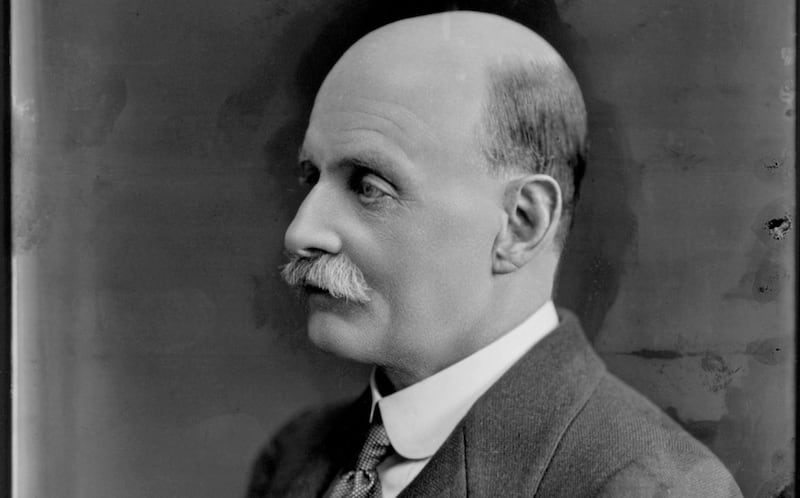The Irish state’s decade-plus-long programme commemorating the Irish revolutionary years has come to an end, the finishing point to the decade being 1923, the year the Irish Civil War ended and the Irish Free State joined the League of Nations.
It is instructive that 1925 was not chosen as the end point despite the shelving of the Boundary Commission report in December of that year, which provided a form of permanence to the north-south border that had not existed beforehand, a far more fitting moment in my view as a conclusion point.
While the Irish state and its Expert Advisory Group on Centenary Commemorations did not ignore the partition of Ireland, I feel more could have been done to mark this – certainly the most live, if not the most contested, moment from the Decade of Centenaries. Perhaps, though, the state and its advisory group were reflecting how people in the 26 counties feel about partition and Northern Ireland in general, which is not a great deal at all.
Most people south of the border will have a reasonable knowledge of Bloody Sunday in Dublin in November 1920. Few will be aware of Bloody Sunday in Belfast in July 1921. Despite the scale of the political violence in Belfast from 1920 to 1922, the further away people are from Belfast, the less likely they are to know of, let alone commemorate, it.
Not only was Ireland partitioned in 1921, history on the island was also partitioned. While much has been written of incidents such as Ballyseedy and the burning of Cork city south of the border, little attention has been paid to events in Belfast, to incidents such as the Weaver Street bomb, the “McMahon Murders” and the “Altnaveigh Massacre”.
Most people south of the border will have a reasonable knowledge of Bloody Sunday in Dublin in November 1920. Few will be aware of Bloody Sunday in Belfast in July 1921. Not only was Ireland partitioned in 1921, history on the island was also partitioned
The 2020 controversy over the proposed RIC/DMP commemoration in Dublin Castle highlighted the lack of general knowledge of and somewhat indifference to the events that led to the division of Ireland. At the time, most commentary in the media and on social media focused on the RIC’s role in the south, west and east of Ireland during the War of Independence. Incidents in places such as Balbriggan, Cork City, Tuam, Clare and Croke Park were stressed, with little mention of the role of policing in Belfast during the waves of violence that accompanied partition.

One of the most notorious members of the RIC throughout the whole island, Cavan-born Belfast-based DI John Nixon, who was widely believed to be head of the “murder gang” responsible for many reprisal killings of Catholics, was hardly mentioned. The roles of the Black and Tans and the Auxiliaries were highlighted extensively and yet the role of another controversial quasi-military police force formed in 1920, the Ulster Special Constabulary, received sparse attention.

Charles Wickham, the divisional commissioner of the RIC in Ulster, was placed in charge of the Specials, whose actions were subject to local RIC authority. Emphasising the partitioning of Irish history, the mayors of Belfast and Derry were not invited by the Irish government to the postponed commemoration for the RIC and DMP in Dublin Castle, even though the RIC was an all-Ireland body.
The RIC controversy became an issue in the early phases of the 2020 Irish general election campaign, with Fine Gael suffering a public backlash for its stance on the proposed commemoration. It showed that many of the more contentious commemorations, which came thick and fast after 2020, could not easily be sanitised by calls for reconciliation and “maturity”.
Arguably, the most contentious of all, commemorating the partition of Ireland, must have given politicos in Dublin, Belfast and London sleepless nights for its potential to heighten divisions – divisions that had become open sores on these islands since the Brexit vote of 2016. While the Covid-19 pandemic put the governments in crisis mode for prolonged periods of time, there must have been inter-governmental collective sighs of relief that the pandemic would curb the more public and open events to commemorate partition.
Given the diametrically opposed views on partition held by nationalists and unionists, it was always going to be difficult to put reconciliation at the centre of its commemoration. And what exactly was the most appropriate date to commemorate partition, a long, drawn-out process that took years to take hold?

Arguments could, and were made, for commemorating Northern Ireland’s foundation date on December 23 1920, the date the Government of Ireland Act came into being, or the date Northern Ireland became a political entity in May 1921, or when King George V officially opened the Northern Ireland parliament on June 22 1921. It could also be argued that Northern Ireland’s borders only became secure after the Boundary Commission debacle of December 1925.
As commemorations are always more about the present than the past, the fraught political environment that has existed since Brexit was always going to make commemorating partition more troublesome, particularly for those who hoped it would be a reconciliation festival. For such a divisive process that was the partitioning of Ireland, why should it be about reconciliation anyway? There is nothing wrong with exploring and analysing partition in all its messiness and destructiveness. It is quite frankly patronising to people on this island to suggest otherwise.
According to Jonathan Evershed, much of the criticism of President Michael D Higgins’s decision not to attend the church service in Armagh in September 2021 to mark the centenary of Ireland’s partition, organised by the main Christian churches on the island, was that it was a setback for reconciliation on the island. The Irish public’s support for the president’s stance was confirmation to many that British and unionist identity would not be embraced in a “New Ireland”. Surely, you can embrace and accept British and unionist identity and fundamentally disagree with the partition of Ireland and how it was enforced?

Michael D Higgins’s stated reason for non-attendance was the political nature of the church service. However, all commemorations are political in nature, including his Machnamh 100 presidential seminars, as was his decision not to attend the service.
Whether it was the DUP or Sinn Féin, or Fianna Fáil or Fine Gael, marking an event during the Decade of Centenaries, all were done with today’s political considerations in mind. Given the political environment that exists on these islands post-2016, commemorating the partition of Ireland was also going to be difficult and very political in nature.
It just took a global pandemic to stifle the level of contentiousness that prevailed as Northern Ireland marked 100 years in existence.
For such a divisive process that was the partitioning of Ireland, why should it be about reconciliation anyway? There is nothing wrong with exploring and analysing partition in all its messiness and destructiveness. It is quite frankly patronising to people on this island to suggest otherwise




